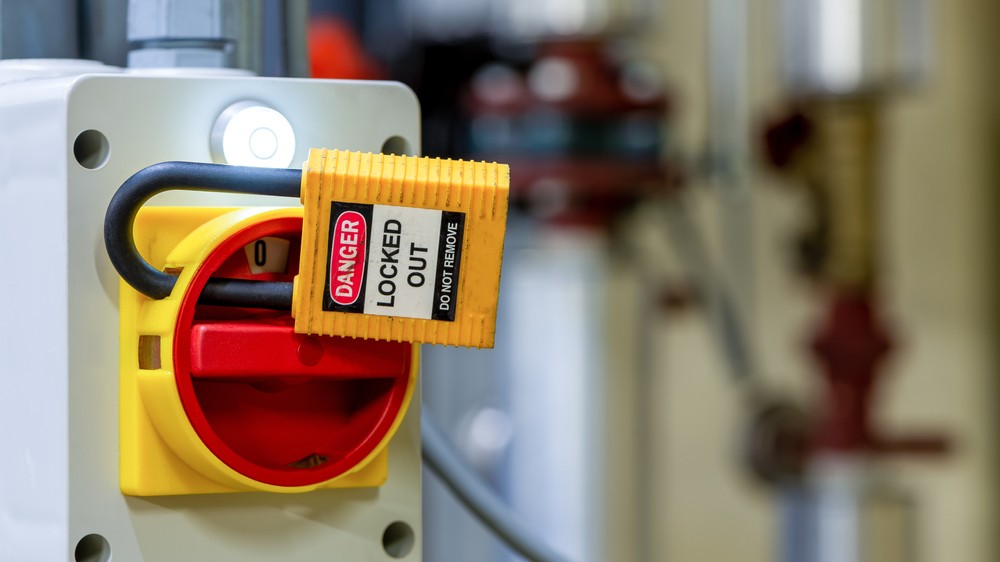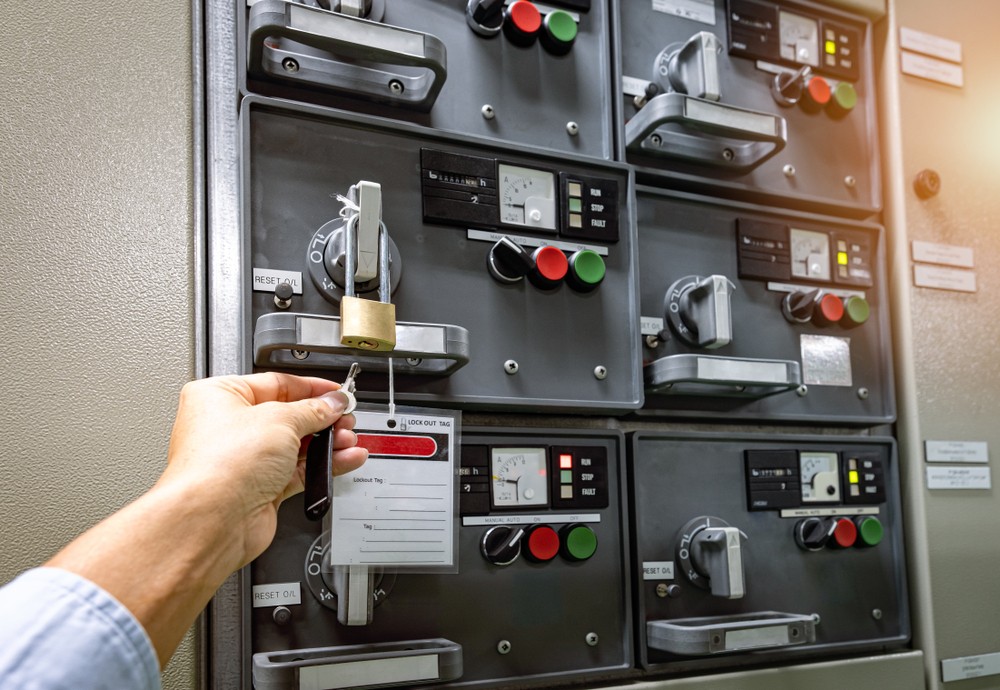Practice These 8 Essential Lockout-Tagout Steps

Lockout-tagout (LOTO) is one of the most important OSHA-mandated practices for manufacturing environments with dangerous equipment. It’s a rigidly incremental process designed to eliminate any potential for accident during maintenance and service checks — typically by locking out a power source.
But hanging a lockout tag on a startup switch isn’t enough to guarantee maintenance tech safety — which is why there’s a specific, detailed LOTO process. OSHA prescribes these eight steps for a complete LOTO process:
- Prepare for the shutdown. All employees should know the procedure for a shutdown. Proper preparation involves awareness of any hazardous energy sources and their connection to the equipment under service. Preparing for the shutdown means having a plan to deal with power and orchestrate quick, efficient service.
- Notify affected personnel. It’s imperative to notify all employees working within the affected area when a lockout is set to occur. Give them an estimate for how long the lockout could take, and advise them to avoid any activity involving power draw. Keep employees apprised of LOTO procedures involving electricity, hydraulics, and chemicals.
- Shut down equipment. Practice proper safety techniques for shutting down equipment. Follow the shutdown guidelines in the equipment’s operating manual. Machines may also have equipment specific procedures techs should follow to ensure an efficient restart after the service check.
- Isolate energy sources. Keep employees safe by isolating energy sources. Switch off circuit breakers and valves controlling the supply of energy to equipment. Isolating energy sources often requires authorization and must involve strong and effective communication to ensure no one interferes to reconnect the power source.

- Apply LOTO devices. LOTO devices prevent the activation of equipment by locking it in an “off” position. In many cases, a single piece of equipment will have several lockout points. All lockout tags should show who locked it and the reasons for the lockout. If the lockout involves multiple individuals, each should attach their own device and/or tag.
- Release stored energy. Stored energy can be dangerous if released unexpectedly. A key LOTO step involves expelling any pent-up energy. Examples of stored energy include compressed air, capacitors that hold an electrical charge, steam, etc. Be sure to clear the area before releasing stored energy.
- Verify the lockout. It’s one of the most important steps of the process, but verifying the lockout is easy to overlook. It’s a quick step for double-checking all equipment is properly locked out and confirming proper hazardous energy isolation.
- Maintain the lockout. Keep all equipment locked out until the affected area is deemed safe. After service and maintenance, anyone who applied a LOTO device can remove it and reconnect equipment to its energy source. Leave controls in the off position during the reconnection process.

Every LOTO procedure must follow these eight steps. Skipping even one of them puts everyone at risk and can lead to severe — and avoidable — workplace accidents. LOTO training is an integral part of in-house maintenance tech training, and it’s not enough to know it. Manufacturing staff must practice and enforce it meticulously.
